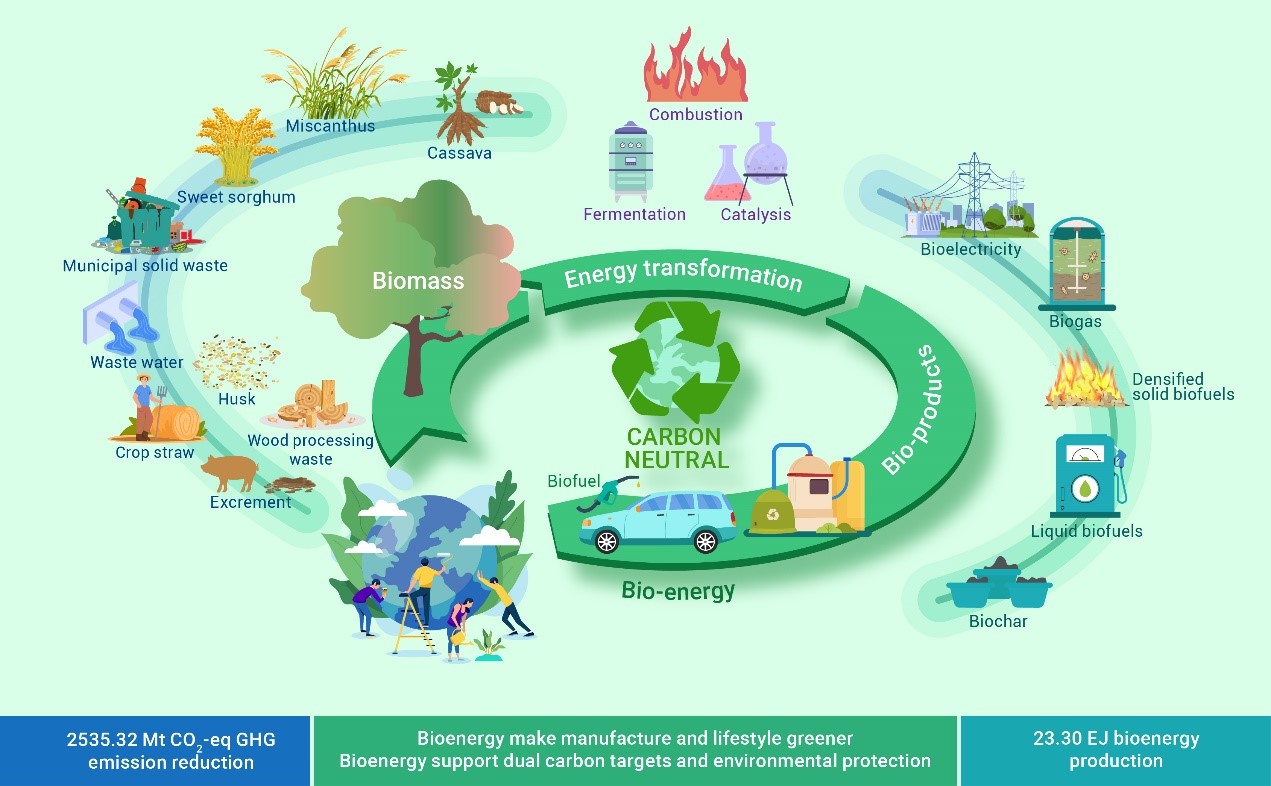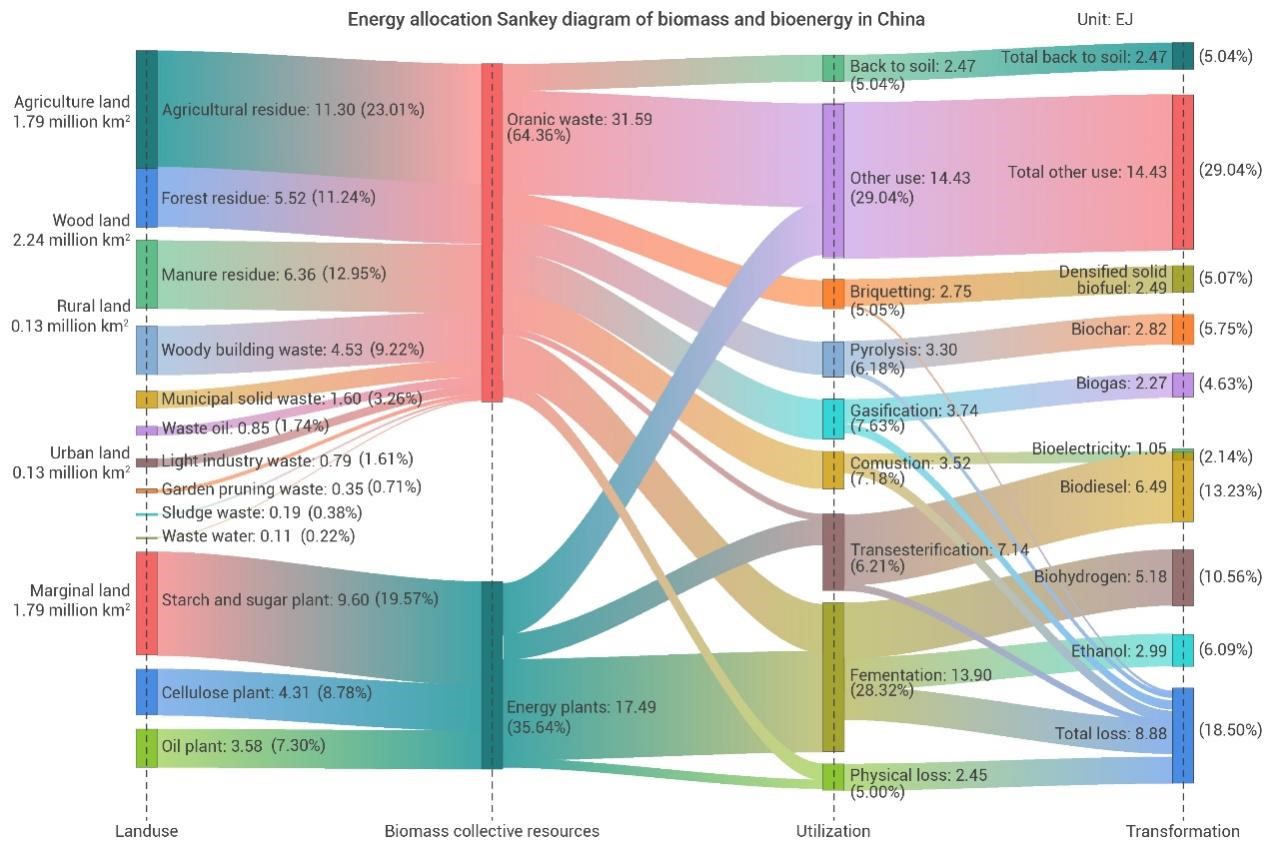Energy Conservation and Carbon Reduction Potential for Multi-Source and Multi- Approach Biomass Energy Conversion
Biomass energy is a form of solar energy that stored in biomass through plant photosynthesis. Biomass energy is a renewable energy and the only renewable carbon source. There are abundant and diverse biomass resources, mainly including agricultural waste, forestry waste, production and domestic waste, and energy plants on marginal land. However, due to its diverse and dispersed types, biomass development and utilization is limited, and some biomass is even considered as waste, resulting in energy waste.
China has abundant biomass resources. Previous studies have emphasized biomass resources for potential energy use in China. However, the comprehensive analysis of energy conservation and carbon reduction for biomass through multi-source and multi-path energy conversion has not been systematically studied.
A joint research team consisting by Professor XI Fengming group from Institute of Applied Ecology of the Chinese Academy of Sciences (CAS), Professor FU Jingying group from Institute of Geographic Sciences and Natural Resources Research of CAS, and Professor WANG Feng group from Dalian Institute of Chemistry and Physics of CAS constructed a comprehensive bioenergy accounting model with a multi-dimensional analysis that combines spatial analysis, life-cycle analysis, and multi-path analysis. Adopting the accounting model, they assessed the China’s bioenergy production and carbon emission reduction potentials.
The study was published in The Innovation on April 13.
They found that the collectable biomass resources in China is 49.09 EJ yr-1, primarily originating from organic wastes (63.465) and energy plants on marginal land (35.64%). Excluding other utilization ways and losses of biomass, the potential for energy use is approximately 29.73 EJ. Through efficient energy conversion, clean bioenergy production is 23.30 EJ, accounting for about 19% of China’s total primary energy production. The corresponding carbon reduction potential is 2535.32 Mt CO2-eq, taking up about 25% China’s carbon emissions. Prioritizing provinces rich in biomass resources, such as Guangxi, Sichuan, and Jiangsu, could be considered for optimizing biomass development.
In addition, attention should also be paid to bioelectricity because of its effective substitution for conventional counterparts in terms of energy conservation and emission reduction.
This study reveals the energy conservation and carbon reduction benefits of multi-approach biomass energy utilization toward carbon neutrality, which will provide important data support for the establishment of China's clean energy structure system and the realization of carbon neutrality goals.

Fig.1 Schematic diagram of biomass energy conservation and carbon reduction with multiple-sources and multiple-approach biomass use(Image by XI Fengming)

Fig.2 Energy allocation Sankey diagram of biomass and bioenergy in China(Image by XI Fengming)
YUE Qian
Institute of Applied Ecology, Chinese Academy of Sciences
Tel: 86-24-83970317
E-mail: yueqian@iae.ac.cn
Web: http://english.iae.cas.cn



